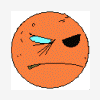Probably what you want to do is learn GLSL or HLSL or both. Most of what OpenGL and DirectX do is make calls to the shader to do the actual work on the graphics card. The shader code is more "graphics card level" than DX or OGL themselves. When you understand the shader programming you'll have a pretty deep understanding of the graphics card.
There are some things outside of the shader, such as setting any sort of render state and defining buffers and such, but most of that is about getting ready to call the shader.
This book is a highly technical discussion of the graphics card programming. I would not recommend reading it unless you are at least at an intermediate level on the subject and unfortunately it is DX11 and thus starting to get a little dated. I think DX12 and Vulkan get into an even lower level of what is going on inside the graphics card.
Maybe a better place to start is with learning GLSL and HLSL and some of the math behind shader programming. I have a video series on YouTube that teaches how to write a basic Blinn-Phong shader in HLSL. This is a strong foundation for any other type of shader you plan on writing after that. The series stops just short of normal mapping, which would have been the next step. Unless you are interested, you could probably skip the intro video in the HLSL series and jump straight to the Triangles video. If you don't know Linear Algebra, you probably want to watch the matrix and vector videos as linear algebra is huge part of how things actually get drawn.
Remember that what you are actually doing is drawing a still motion frame. Things will make a little better sense if you realize that and understand that you are not doing full motion. Rather you are drawing one frame, then drawing another, and another and another, and it's actually the sequence of still motion frames that gives the impression of animation.
Oh, and you may also want to check out LearnOpenGL.com as a source of learning OGL. It gets pretty deep into teaching graphics including delving into the subject of PBR.










